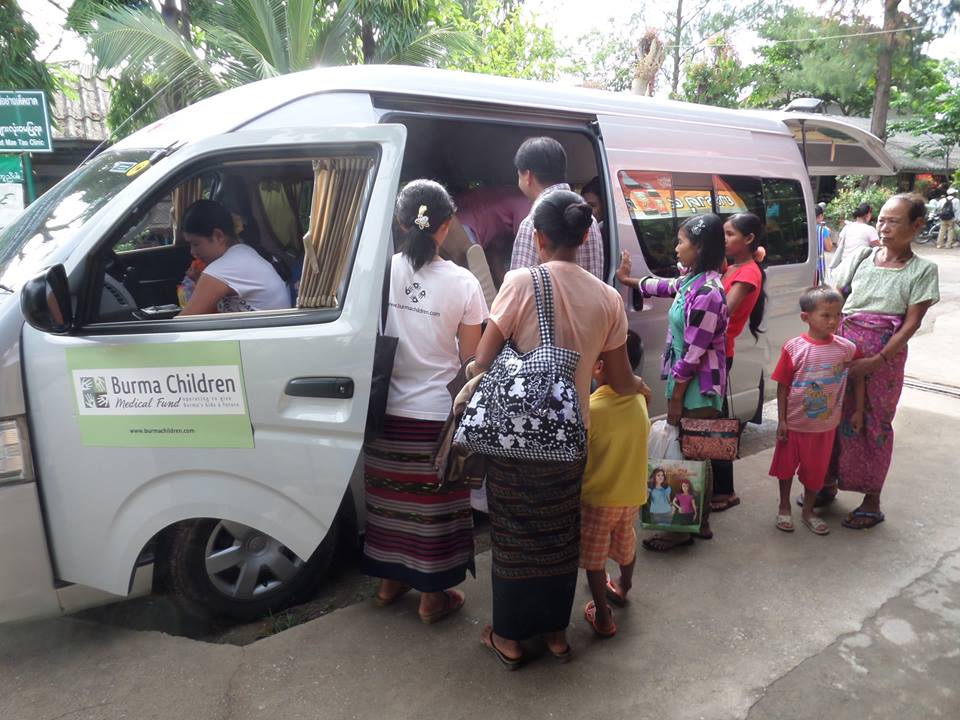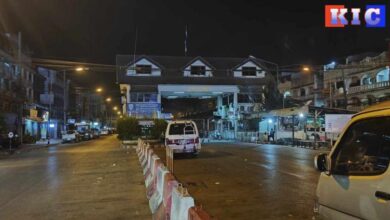The Young Refugee Who Won’t Give up Hope

Aung Naing was six years old when he moved to Nu Poe refugee camp in Thailand, leaving conflict-wracked Karen State, in Eastern Burma.
Sitting down in the small compound on the outskirts of Chiang Mai that has been his home for the last 15 months, Aung Naing recalls those first years in the camp.
“My mother and father had gone to Nu Poe camp in 1997, I was too young so I stayed with my Aunt and helped her farm rice until I was old enough to travel in 2001.” Life in Nu Poe was very different from home, “life there was ok, but it could be hard. My father died in the camp in 2006 from tuberculosis, but there were programs and school there to support me and I made many friends.”
Slowly Aung Naing and his family built up a life in the camp; his mother would sell snacks outside their small hut for around 50 baht (US $2) a day. To augment a modest supply of rations, they would also collect fruit and vegetables from the surrounding jungle. Aung Naing would play football with his friends, and enjoyed school.
Yet life took another drastic turn when Aung Naing, now 19, found out he had Hodgkin’s Lymphoma – a form of leukaemia – last year.
“I got a lump on my throat, it went away but another lump resurfaced on my waist. I went to a Thai hospital in Umphang to find out what it was – the doctor said I had cancer – leukaemia – and that I needed treatment in a big hospital in Chiang Mai.”
“I had never heard of leukaemia before, and I was very sad when I found it that it could kill me.”
Aide Médicale Internationale (PU-AMI) an NGO that delivers health treatment to refugees sent Aung Naing and his mother to Burma Children Medical Fund, a non-profit organisation based on the Thai Burma border, that provides life-saving treatment to refugees and people from Burma.
Ms Thornton, the BCMF director, explained how Aung Naing came to their program. “Aung Naing was under the care of PUAMI in Nu Poe camp – he got sick and they referred him to Umphang hospital. The hospital identified that he had leukaemia and needed treatment straight away but PUAMI has no referral program to treat patients with cancer, so they approached us.”
“We saw that Aung Naing’s cancer was at an early stage and that he seemed to be in good health so we said we could help. Then we sent him to Chiang Mai for treatment,” Ms Thornton says, “Unknown to us when we sent him to CM there were another 20 patients at the hospital also with leukaemia – Aung Naing is the only survivor of that group.”
Aung Naing says that adapting to life in Chiang Mai, far away from his friends and family, had been difficult. “My mother came with me here but had to leave after four days to look after my little sister. I haven’t seen them, or my friends, in over a year. But I call them on a phone once a week.”
Keeping Aung Naing in Chiang Mai was vital for his treatment, Ms Thornton explained. “We kept him in our patient house because he is from such an isolated camp, and we were concerned that he could not get back out from the camp for his monthly blood test.”
Aung Naing remembers how at first the chemotherapy made him sick and he lost all his hair, but now he is off the chemotherapy while further blood tests are analysed. “The medicine at first made me very sick, I would vomit and be so tired that I couldn’t even play Ching Lo with my friends here at the BCMF patient house but now I feel stronger and can play,” Aung Naing says, referring to a game played across Burma, where a circle of friends quickly volley a fist-sized cane ball.
Aung Naing says that he was grateful that BCMF was working to save his life, “When I was in Chiang Mai hospital there were 20 other leukaemia patients, Burmese, Karen and Thai. They are now all dead.” Aung Naing says he was lucky to get treatment in Thailand through BCMF, because healthcare in Burma and in the camps is basic. “I admire those looking after me and the people here at this safe house are like a second family to me. We look after each other because we cannot leave this compound unless for special day trips with our Thai minder. I am happy here – it is difficult to stay in just one place but I have to try and cure my disease.”
A Land Without Healthcare
Doctor Vit Suwanvanichkij, a research associate at the Centre for Public Health and Human Rights, Johns Hopkins Bloomberg School of Public Health, is a specialist in health policy issues confronting Southeast Asia, particularly Burma. He painted a stark picture of Burma’s health system today. “Burma’s healthcare system is a disaster, a consequence of decades of mismanagement, corruption, and disinvestment under successive military regimes. Although the government health budget has increased under President Thein Sein, it remains woefully inadequate, with little tangible change on the ground for most of the peoples of Burma, particularly rural, ethnic communities.”
A 2013 analysis of Burma’s budget by UNICEF noted that an 81% increase in the country’s coffers for that year had failed to translate into meaningful spending on health or education. The budget analysis found that in 2012-2013, about 29% of Burma’s budget went to the military, while as a percentage of total government spending, health received 5.7%, or 0.76% of Burma’s GDP.
UNICEF said that while health and education had seen an increase in funds on paper, Burma’s exchange rate unification coupled with long overdue salary increases for the social sector meant that “improvements in terms of additional human and physical resources available to the social sectors for realizing children’s rights were very limited, if at all present.”
Living With Hope
It starts to rain and Aung Naing moves to find cover; leaning against the concrete compound wall, he remembers a low point in his time here. “I had a best friend here, Saw Kayin, he was 17 – not much younger than me. But he died here at the clinic because he was very sick. I feel really sad about that, I miss him.”
“I am not afraid to die – if I die it is my fate, but I want to live. I feel a sense of hopelessness sometimes, but I have to hold on to hope.”
Ms Thornton says that Aung Naing’s health outlook is good and that BCMF will continue to monitor his condition. “At the moment his prognosis is good – he has monthly blood tests to make sure that the leukaemia is not coming back. He will be having these blood tests every month for the next year,” she says.
“He will be able to go back to the camp to see his family in two months time but he will still need those close monitor of his blood in CM every month. Hopefully after this treatment he will be cured – we will not know for sure when his will be cured. We can only hope.”
The rain stops, and Aung Naing gets ready to play ‘Ching Lo’ with some of the other patients at BCMF.
“If I get better I will go back to the camp and join school again. I had to leave when I was in grade 9. I want to become a doctor and create a clinic in my hometown in Karen State, because there is no healthcare there,” he says, cane-ball in hand.




